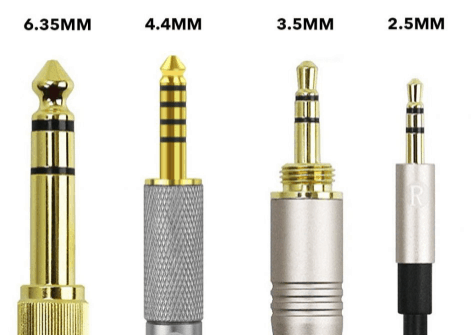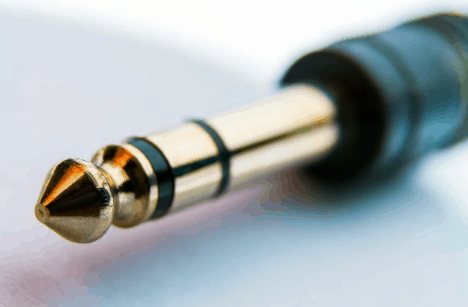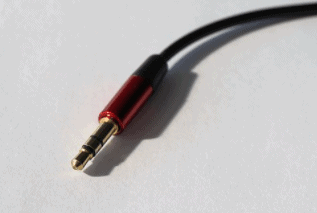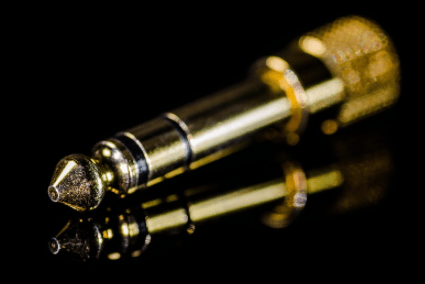Headphones!
We all need them, we all use them and we all love them.
And yes, there are plenty of differences between them, right?
Open back, closed back, in-ears, etc…
But, what is the most obvious difference? The Headphone Jack!
Yes! The jacks! The connectors we use to plug them into our playback devices!
As you might know… There are 2.5mm connectors, the super tiny ones you see on some hearing aid devices and IP phones.
But we also have the common 3.5mm connectors, also known as the "mini plug" jacks…
Yes, the same jacks we find on iPhones, iPods, iPads and most consumer level mp3 devices.
Do you remember the 6.35mm jacks? The big and bulky headphone jacks you see in recording studios? People call them "a quarter inches"…
Those are super important too!
But, what are the differences between these?
When should you use one or the others?
Are there any specific purposes for each?
Read this article and you will know, for sure!
Differences between 2.5mm, 3.5mm and 6.35mm

The main difference between these three jacks is their size.
Size:
The 2.5mm jacks are so small that people even tend to break them when not handled with proper care!
On the other hand the 3.5mm is a bit larger, but the 6.35mm is definitively "King Size", not portable at all.
Another difference is their connection possibilities.
The 2.5 and 3.5mm jacks can route two channels of stereo audio channels, a microphone signal (returns) and a ground.
Now in the case of the 6.35mm, they typically never come with a microphone signal, just the regular stereo audio signal and its associated ground pin.
Materials made:
What about the materials they are made of?
Well, the 3.5 and 6.35mm come in regular aluminum as well as gold plated high-quality connectors. But in the case of the 2.5mm, those are only aluminum.
What about the signal level?
The 6.35mm (quarter inches) normally handles higher voltages.
The reason is because people not only use these for headphones, but also line level signals, therefore it could be considered more versatile.
Conversely, the 2.5 and 3.5mm connectors will handle low headphone signal level in the vast majority of cases.
You typically never see people running line level signals on a 2.5mm connector!
Finally, the "sturdiness" of the connection…
On this aspect, the 6.35mm is king. You simply can't beat how strong the 6.35mm jack is.
There is a reason why most recording studios use them!
Now, the 3.5mm is also sturdy and nice for running and jogging. It will let you shake it without the risk of signal interruption.
But the 2.5mm is unfortunately very fragile, not ideal for any kind of sports applications or pro audio and live sound situations.
Which headphone jack is recommended for which application?

Let's say you are looking to use headphones in a recording studio setting.
You are a musician and you will be recording your instrument, or perhaps a singer and you will be interpreting your lyrics in front of a microphone.
The recommendation is that you use 6.35mm jacks (¼ inch).
Why?
Simple.
All studio and pro-level headphone connectors use that 6.35mm jack size.
Headphone amp boxes, consoles, interfaces, they all work under the 6.35mm size, so really, you have no other option there.
Now, what if you are working at the consumer level?
You want to listen to music at home, while jogging, during your airplane flight or perhaps at your lunch break?

Chances are you will be listening on some kind of mp3 player or simply your cell phone.
What kind of jack do they use? 3.5mm!
3.5mm, or also called "mini plug" is the industry standard for consumer-level headphone connectors. You just can't go wrong with those.
Last, but not least, if you are trying to connect perhaps a headset to a landline phone or to a two-way radio, a video camera, or some kind of hearing aid device, you will be using a 2.5mm jack.
This small size makes it perfect to "hide" it on hearing aid devices and headsets.
Also, since these applications do not require you to be moving or constantly unplugging from a console or distro box, their fragility does not affect their operation!
Can you fix them in case of failure?

It depends!
It depends on the type of connector, of course…
So, let's assume your headphones are 6.35mm and you suddenly stop hearing one side of the headphones.
Most likely, the problem is something with the soldering point of the cable at the jack.
Luckily, the 6.35mm are made so that you can service them.
How?
Easy, just unscrew the skirt of the connector and check the soldering. I bet the problem is there.
Now, if the same situation happened with a 3.5mm connector, you could try opening it and fixing it.
Worst case scenario, you can always buy another 3.5mm connector and simply replace it by resoldering the cable to the new jack.
The problem comes when you have 2.5mm connectors that are giving you troubles.
These connectors are soldered using micro-soldering techniques.
And when I say micro soldering, I mean you will need a huge magnifying tool and perhaps a microscope to be able to see the soldering point and redo it.
You will also need micro soldering tools that I am sure you don't have, unless you work at a computer motherboard factory or something like that!
So yes, I am sorry but 2.5mm connectors cannot be fixed.
Conclusion
The differences between these three types of headphone jacks are crucial.
As explained before, the size of the jack matters, and it totally translated into how sturdy or how fragile these can be.
Also, you want to keep in mind the use that you are going to give to these headphones.
If you are going to be jogging (like most people at the gym) you should consider the 3.5mm option.
If you are a musician the ¼ inches high quality audio connector is your best bet.
But if you have hearing problems or need headphones for your phone and headset the 2.5mm jack will be your option.
Last but not least, think about the need for repairs.
Need to repair them often?
Get the ¼ inches jack. Otherwise forget about fixing these jacks.

